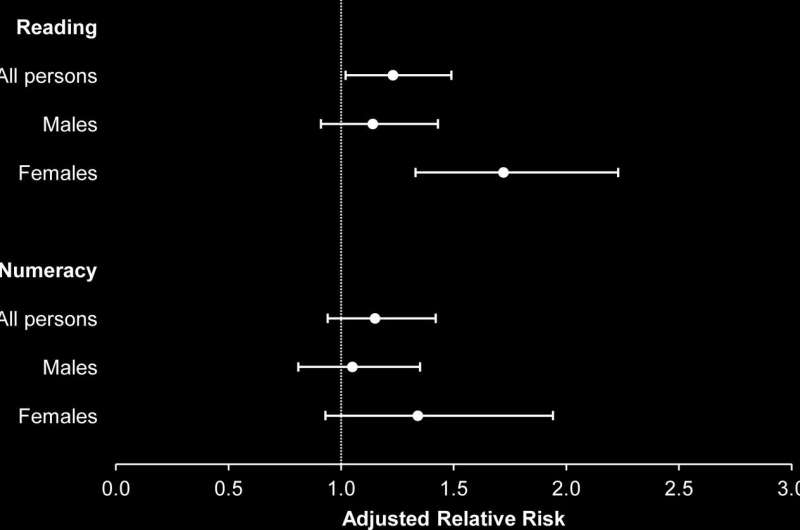This article has been reviewed according to Science X's editorial process and policies. Editors have highlighted the following attributes while ensuring the content's credibility:
fact-checked
peer-reviewed publication
trusted source
proofread
Childhood burns take a toll on academic outcomes

A new study published in the BMJ's Archives of Disease in Childhood has found young people of both sexes who were hospitalized due to burns were less likely to finish high school than their peers.
Led by Associate Professor Rebecca Mitchell from the Australian Institute of Health Innovation (AIHI) at Macquarie University, the research compared the academic performance and high school completion rates of about 2,000 young people to matched peers who had not been hospitalized for an injury.
The study found that the young people who had been burned were four times as likely to not finish Year 10, and more than twice as likely to not finish Year 11 or Year 12.
This research is the latest in a series of studies looking at the effects of hospitalization for injuries and illnesses including broken bones, asthma, diabetes, epilepsy and mental health on young people's educational outcomes.
The research team used linked birth, health and education records in New South Wales from 2005 to 2018 to analyze national literacy and numeracy test results and high school completion.
To create a peer comparison group, each hospitalized young person was matched against a randomly selected peer of the same age and gender who lived in the same postcode but had not been hospitalized for an injury.
In the case of the burns patients, the most common cause of injury was contact with hot drinks, food, fats or cooking oils, followed by other hot fluids including hot or boiling water.
Almost all of the children in the burns cohort had more than 10% of the surface of their bodies affected, with torsos the most commonly injured area, followed by hands or wrists.
Associate Professor Mitchell says in addition to an increased risk of not finishing high school, girls who had burn injuries also had a higher risk of not achieving the national minimum standards in reading.
"Reasons why young females hospitalized with a burn have worse academic performance for reading could include reduced learning opportunities, school absenteeism, or psychosocial anxieties due to lower self-esteem and stigmatization," she says.
"This research shows that we need to monitor academic progression in young people after they sustain a burn to identify if they require any learning support."
Pediatric burns specialist and co-author Professor Andrew Holland says while most burns occur early in childhood, the effects can extend far beyond the initial period of acute care and recovery.
"In some cases, burns patients experience ongoing pain and poor sleep quality, which can disrupt a young person's ability to engage and learn," he says.
"In addition to this, scarring can have an influence on their motivation or ability to attend school."
More information: Nicole Halim et al, Impact of childhood burns on academic performance: a matched population-based cohort study, Archives of Disease in Childhood (2023). DOI: 10.1136/archdischild-2023-325769




















